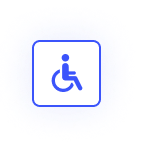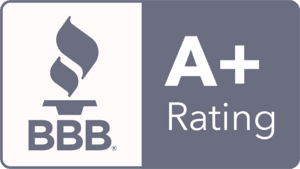Developing an e-commerce site demands more than simply high-quality products. The E-Commerce Website Design plays a critical role in attracting visitors, driving conversions, and ensuring a seamless user experience. In this blog, we’ll explore the five essential elements that make a Responsive, User-friendly e-commerce design effective and optimized for success.

1. User-Friendly Navigation
A key component of any successful Responsive Design is its ease of navigation. When visitors arrive at your site, they should be able to find what they need without frustration. Clear, concise menus and well-organized categories ensure that users can easily browse products. Consider adding search filters, dropdown menus, and a visible search bar to make product discovery straightforward. Prioritizing a simple, logical layout will help reduce bounce rates and improve overall customer satisfaction.
Tips for improving navigation:
- Organize categories logically with clear labels.
- Use mega menus for large product ranges.
- Ensure that your search function is fast and intuitive.
2. Responsive Design for Mobile Users
In today’s digital landscape, mobile commerce accounts for a significant portion of online sales. A responsive E-Commerce Website Design adjusts to various screen sizes, providing a seamless experience across devices such as smartphones, tablets, and desktops. A poorly optimized mobile design can lead to lost sales and frustrated customers.
Making sure your website is responsive for mobile devices enhances both user experience and search engine optimisation. Google rewards mobile-optimized sites with better search engine rankings, making responsiveness an essential element of your Website Design strategy.
Key mobile-friendly features:
- Use larger buttons and touch-friendly navigation.
- Ensure fast loading times by optimizing images and code.
- Avoid intrusive pop-ups that disrupt mobile browsing.
3. High-Quality Visuals and Product Images
Visuals are a vital aspect of E-Commerce Website Design. High-quality images allow customers to see your products in detail, boosting their confidence in purchasing. Ensure that your product images are clear, well-lit, and can be zoomed in for better viewing. Additionally, consider adding videos or 360-degree views of your products for a more immersive shopping experience.
Remember, first impressions matter. A visually appealing design not only captures the visitor’s attention but also conveys professionalism, reliability, and trustworthiness. Your visuals should also align with your brand’s identity, creating a cohesive look across your website.
Visual design best practices:
- Use professional product photography.
- Incorporate lifestyle images showing products in use.
- Ensure consistency in image sizes and quality throughout the site.
Read more about: How to Use Content Marketing to Boost Brand Awareness
4. Fast and Secure Checkout Process
A smooth and secure checkout process is crucial to reducing cart abandonment and ensuring a positive shopping experience. An effective E-Commerce Website Design should have a simple, user-friendly checkout that eliminates friction. Complicated forms, unexpected fees, or forced account creation can turn potential customers away. Offering multiple payment options, such as credit cards, PayPal, and mobile wallets, also enhances convenience.
Additionally, customers need to feel confident that their personal information is protected. Implement SSL certificates and display trust badges to reassure buyers that their data is safe. A trustworthy checkout system must have encryption and secure payment gateways.
How to enhance the checkout experience:
- Cut down on the processes required to complete a purchase.
- Provide guest checkout options for faster transactions.
- Give the shipping charges and delivery schedules up front.
5. Optimized Site Speed and Performance
In Website Design, speed is critical. A slow-loading site can result in a poor user experience, causing visitors to leave before even viewing your products. Research indicates that a little one-second gap in page loading speed might result in a notable decrease in conversion rates.
To ensure your site performs well, optimize images, reduce unnecessary plugins, and leverage caching techniques. Regularly test your site’s speed and performance across different devices and browsers. Google also considers page speed a ranking factor, so improving load times can positively impact your SEO rankings.
Tips for optimizing site speed:
- Compress and optimize images without compromising quality.
- Use a content delivery network (CDN) to distribute site load.
- Regularly update your software and hosting for optimal performance.
Conclusion
An effective E-Commerce Website Design is a combination of user-friendly navigation, mobile responsiveness, high-quality visuals, fast and secure checkout, and optimized performance. By focusing on these five essential elements, you can create a website that not only attracts visitors but also converts them into loyal customers. Ensuring that your design meets these criteria will help you stay competitive in the ever-evolving world of e-commerce.
Unlock the potential of your online store with expert E-Commerce Website Design services from The Valley List. Contact us today to get started!




